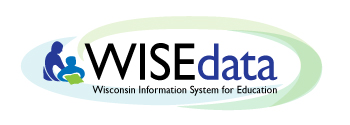
Click the links below to navigate to different sections of this page:
What is Language Instruction Services Data?

WISEdata collects detailed information about language instruction services received by English Learners (ELs, also referred to as English Learners, ELs) as part of the students’ school-specific record, not as part of a student’s individual course record.
Federal and State laws require schools to provide language instruction educational programs (LIEP) to English learners. The language instruction services (LIS) data element describes which language program or language services an English learner is receiving. LIEP data elements are incorporated into the WISEdata report, Student Language Instruction Program Association (sLIPA).
These language instruction services include services provided under Title III of the Elementary and Secondary Education Act (ESEA). For more information about Title III in Wisconsin, refer to the DPI Title III DPI webpage.
Who Should Submit Language Instruction Services Data?
Language instruction data is sent from public schools to WISEdata as part of a student's school-specific record, the Student Language Instruction Program Association (sLIPA), with dates that determine which program association covers a specific period of time.
Why Does Language Instruction Services Data Get Reported?
Title III of the Elementary and Secondary Education Act (ESEA) is part of legislation enacted to ensure that English Learner students, including immigrant children and youth, develop high levels of academic proficiency in English.
Proficiency in English is instrumental for students to achieve high levels in academic subjects, and will also provide the best opportunity for English learners to meet the same challenging State academic standards that all children are expected to meet. Additionally,
Title III of ESEA promotes parental, family, and community participation in language instruction educational programs for the parents, families, and communities of English learners (Section 3101 & 3102). For more information about Title III in Wisconsin, refer to the Title III DPI webpage.
Language Instruction Services Data Elements
-
Language Instruction Monitoring Year (not required for learners with EL codes 1-5)
-
English Language Proficiency (ELP) score
-
NOTE: The ELP score that is used for reporting is the one you submit as part of a student's education organization association on the English Language Proficiency data element.
-
Bilingual / Dual Language Programming
Bilingual and dual language instruction includes methods of study designed specifically for students whose native language is not English, delivered either in English or primarily in the native language of the students.
However, bilingual and dual language programs may serve as world language programs for students enrolled in those programs who are not English Learners (non-ELs). If there are students who are not ELs participating in bilingual or dual language programs, the world language codes listed on the Programs data element page, World Language section. should be used for those students.
For information on how to report EL students participating in bilingual and dual language programs, please see the Language Instruction Services page.
When Do I Use a WL Code and When Don't I?
There aren’t any WL codes that specifically should or shouldn’t be used for ELs. It really depends on the context in which they are participating in the program. For example, if an EL is participating in a dual language bilingual program that provides them with instruction in their home language, then that program would be considered their LIEP and they should be reported as an EL rather than as a WL learner. However, ELs can, and do, participate in world language programs/classes as world language learners. In those cases, they should be classified as such.
For example, students who are ELs may be enrolled in one-way or two-way bilingual programs that provides instruction in English and in a target language that is not their home language. EL students may also be enrolled in a world language course that is in their home language that is designed to build on and expand students’ knowledge of their home language (i.e., a Spanish for Spanish Speakers class at the secondary level). If the course is not part of their LIEP, then they should be classified as world language learners.
WISEdata Portal: Exports, Validations, and Data Metrics
WISEdata Portal will provides the following roster export files of the data received by DPI
- Programs: Student Language Instruction Program Associations (sLIPA)
- This export focuses primarily on the program name: Language Instruction Education program (LIEP). It includes details on language instruction services as well as proficiency levels, assessment years and monitoring status for EL students.
- Programs: Student Program Associations
- This only provides the most general of student program association information, but this includes language instruction.
- Validation Message: Other Programs
- This export shows the validation rule number and additional details required to troubleshoot the errors and warnings that fall under the Language Instruction program, and many other programs as well.
Remember that Language Instruction Services data is connected to a student’s school specific record - not with an individual course association. In the School Roster Details screen, you can filter by Program Type to search students associated with Language Instruction Education Programs (LIEP): Bilingual Program, ESL Program or ESL/Bilingual. With your selection, you can then filter by Program to see specifics. Each of these programs is described in great detail on the Language Instruction Services data element page.
DPI recommends that you open these files in Microsoft Excel and review using data filters and Pivot tables to check that course counts, class sizes, and categories are as expected.
WISEdata Portal will display validation errors and warnings for Language Instruction Services the way it does for your other submitted data. If you have errors, you will want to resolve them by reviewing the data you entered and working with your SIS vendor to make any necessary changes. Once you have made the updates in your SIS to correct your errors, they will be pushed to WISEdata.
Language Instruction Services FAQ & Use Cases
-
What assessment score should I use to submit a student's English language proficiency code? In general, submit a student's English language proficiency code based on the prior year's assessment. If a student is a newly-identified English learner, their proficiency code should be based on the current year's assessment, as no prior assessment exists.
-
What do I need to submit for English learners who are now proficient? English language learners who are now proficient (EL code 6) are monitored for two years on content achievement, but do not receive English language instruction services. Because of this, you do not need to submit the language instruction service or the begin and end dates for these students. Instead:
-
For students in their first or second year of monitoring, submit the student's English language proficiency code (based on the prior year's assessment), the year the assessment was administered, and whether the student is in year 1 or year 2 of monitoring.
-
For students who have completed two years of monitoring, you no longer need to submit a language instruction program association. Continue to submit the student's English language proficiency code as you would for all students. Optionally, if the student is receiving limited English proficiency services beyond the second year of monitoring, such as a Bilingual/ESL program, you can submit that data as a regular program association. For more information about those program associations, refer to the Programs data element page.
-
-
What do I submit if a parent refuses EL services for their child? Submit "Refusal for Services" as the language instruction service.
-
How do I assess a student who I think might qualify for EL services? To identify EL students, districts and participating Choice schools are expected to follow the statewide standardized procedures for identifying English learners which includes the use of the Wisconsin Home Language Survey (HLS) and appropriate screeners as outlined in the DPI EL policy handbook.
-
It may also be helpful to review PI 13.06 Identification of ELP Pupils.
-
Also see the ACCESS for ELs Data and Reporting page and the English Learner Entry and Exit Policies page.
-
-
How do I know which Language Instructional Education Program is the right one to offer my students? Please visit the DPI Language Instruction Services page for a wealth of information on the many programs available.
Didn't Find What You Needed?
The Customer Services Team is here to help!
Please submit a Help Ticket so we may better assist you.